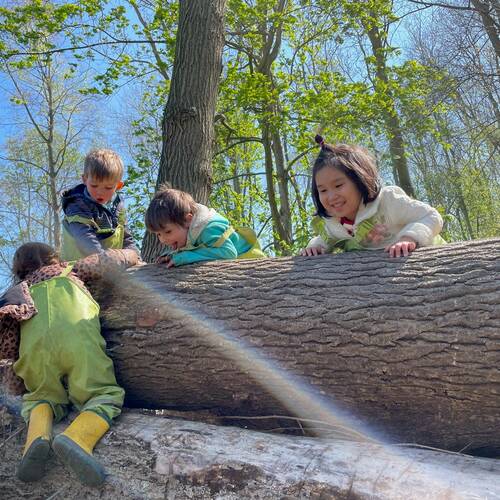
Risky play tips & gallery
Inspiration & tips shared by outdoor practitioners and parents enjoying risky play in their settings.
These tips are from the experts - Forest School practitioners, outdoor leaders, teachers, families - people who love mud play and it’s benefits so much that they have generously shared their skills, knowledge and experience with us.
We thank them all - and welcome any new mud play tips you have - send them to share@muddyfaces.co.uk
Be brave and just take children outside. You don't need to have lots of resources or a big space, just take children outside and see what they do. The more we provide opportunities for children to be outside and lead the way the more benefits we all will gain. Trust the children and it will be the best. Ruth Hill, Fruits of the Forest
Don’t be afraid of it. Give children the chance to stick their hands in a muddy puddle and watch them smile. Nick Couzens, Mission: Wild Adventure
Wear the right gear! Being outdoors can be miserable if you aren’t well prepared with changes of clothes, waterproof layers and good sustenance. Eleanor Astbury, Nature Nest Childcare
Give children the freedom to explore their own ideas for play. They can be so imaginative and engrossed in what they are doing! Lizzy Allen, Coed Ceirios Forest School
There’s no such thing as bad weather, just bad clothing! Dress appropriately and you’ll always have fun. Jess Turver, BD4 Family Forest Friends
Remember that our skin is waterproof and wipe-able! That we can squish and squelch as much as we like but that it will just wash off!
Pretend you’ve just won a mud spa treatment… And that it’s free!
As long as we’re dressed appropriately or have water nearby to wash afterwards, we need to show appreciation and love for mud so our children do not pick up negative vibes and worry or think it’s something negative.
My advice would be to always remember – the mud will wash away but the memories will last forever!
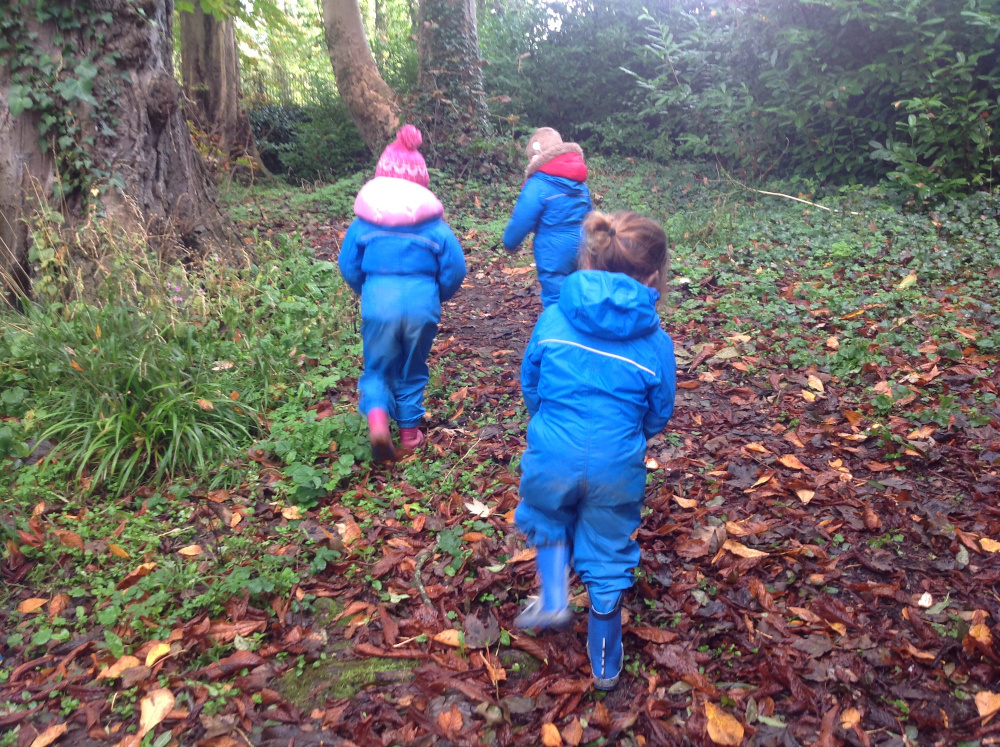
Top Tip number 1 – “Suitable Clothing”. We wear Puddle Suits and wellington boots. These enable us to play outside whatever the weather and protect children’s clothing as much as possible. Children are not afraid to take part in activities as the worry about keeping their clothes clean has gone.
Top Tip number 2 – an enthusiastic approach, from staff, to muddy play reinforces and demonstrates the fun to be had!
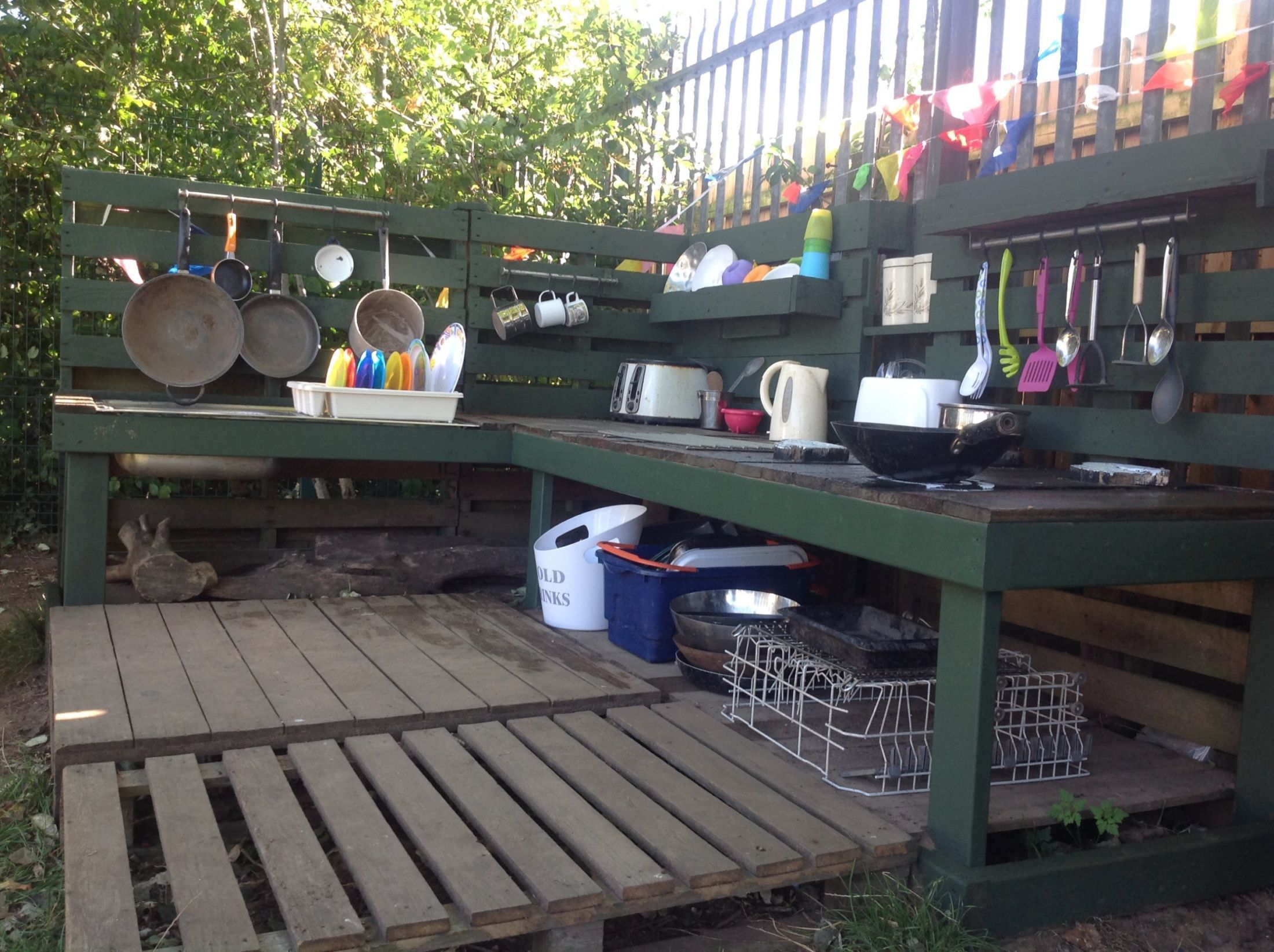
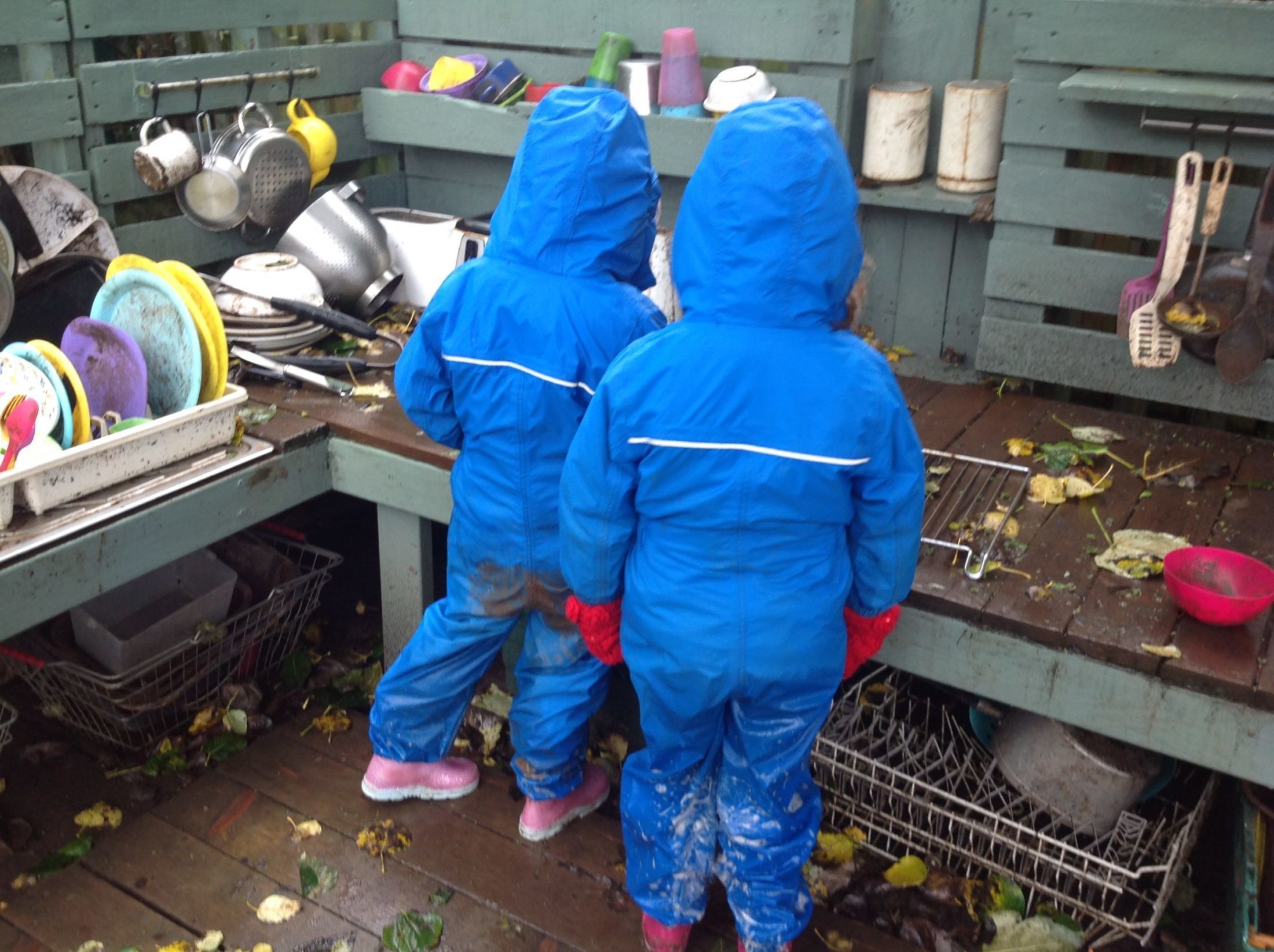
Our favourite, and much used resource, is our Mud Kitchen and associated accessories – all recycled items that were destined for the bin!!
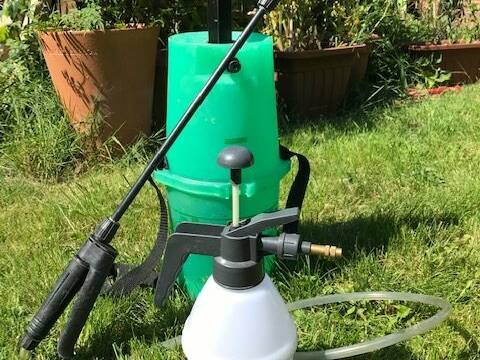
Top tip for clean ups
If you aren’t near a tap/hose try using a pump-up sprayer or large plant mister instead. Just set the nozzle to a jet instead of a mist.
We keep the pump-up plant mister in the boot of our car for muddy or sandy shoes/boots/dog, works a treat 😎
Also good for writing messages on pavements etc.
My best advice for mud play is start simple and take the time to actually watch how children explore and use the space. This way, ideas for resources, displays and activities will all naturally come from them and can be built up over time.
Oh, and invest in good all-in-one waterproof mudsuits!
My advice for anyone new to mud play would be….
Play alongside the children, get messy, watch and listen to their ideas and they will show you the way!
Just go for it, wear the right clothes and be guided by the children 💚
Here’s my mud tip for those new to mud play: if you’re anxious about encouraging your child to play in mud, work to remove those anxieties up front. Get them old clothes that can be ruined. Provide them with tools/ toys that can be covered in mud. Make sure you have a hose available to do an initial cleaning before heading back into the house.
Children pick up on our anxieties and hesitations. If you can ease your own anxieties as a parent, you’ll allow your child the freedom to truly experience the joy of mud.
And remember, when given a choice… always choose mud. Mud washes, but memories last.
So my advice to someone who is new to mud would be – enjoy yourself use mud as a way of making childhood memories and relationships!
Mud is actually proven to help immune systems! Not only that but the sensory part of playing with mud can really relax and calm you down! Wow!
My tip would be to get involved, model to your child or children that it’s fun and OK to play with mud. Show enjoyment and that getting muddy and dirty is OK.
So many children I work with are afraid of being muddy, fearing being ‘told off’ by parents. It’s so sad! They miss out on wonderful experiences. So as an adult, become a child again and enjoy making mud pies, sculptures, different consistency mud, mud paintings and more… get your creative muddy sloppy juices flowing and be an example to your child 💚💚💚💚
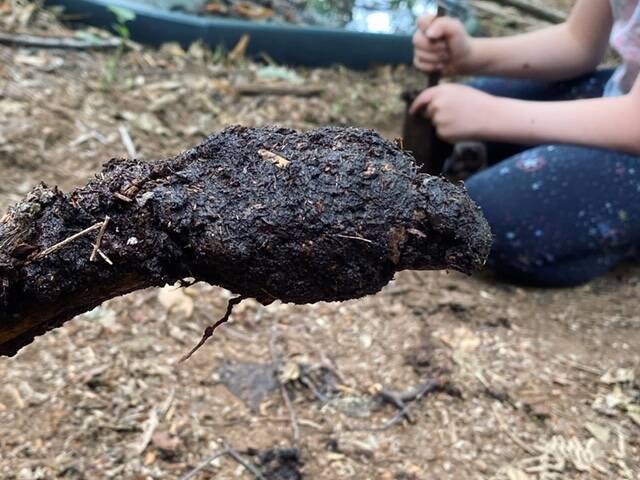
We made mud sculptures like Giacometti! We used our woodwork bench to nail a stick to a base and then mixed mud with shredded paper, we squeezed and squished and then moulded onto the sticks with out hands! 😃
I would say its not just mud… add a pot of herbs nearby (especially this time of year [summer] the Greek Basil and lavender scent the area as the children brush past), some rose petals or daisies, dandelions or some sand.
The children love the use of a pestle and mortar to bash the herbs or flowers before they mix in the mud, and stones with food or cooking verbs painted on.
Find an earthy area, a good strong stick for stirring and add some water. The rest is up to you. Enjoy.
I don’t call it a mud kitchen, this limits it.
There is a plastic crate of soil from the garden centre, and water available, also those slates which you put on the surface of the garden, instead of pebbles over a weed proof membrane.
I provide kitchen things and a toy cooker, but also funnels and small things all the same which would generally hold spices. and a few empty plastic crates, which they can help themselves to and big pots and lots of stirring tools.
Sometimes its cooking by some, birthday parties, and potion-making by others. Tends to be birthday parties if I put out all the part-used birthday candles collected over a long lifetime of hoarding. Can be dispensaries, usually when I provide food colouring as well.
I feel this sort of play is described too often as “Mud Kitchen”, and I think this limits people’s approach to it. We refer to Sand Play and Water Play and I think it would be better to call this Mud Play.
Health and Safety:
If the play is in my garden I always provide compost from the garden centre rather than leaving the children to dig up bits of garden – this is because I feel cats, foxes, and certain wildlife poo anywhere, and it is a garden where wild life is welcome, and I feel it is healthier for the children that way, also more reasonable for plant and animal life.
For mixed age groups (3 to 8) I don’t provide glass as the 3-year-old likes the sound of breaking glass.
These are my two restrictions and maybe knowing this “restrictive” approach was acceptable would lead other adults to accept it as the norm in the way that most now accept sand and water play is the norm for kids.
Thanks to those who took the time to send us really thoughtful in-depth responses to our call out for tips - covering so many of our suggested topics - we really appreciate your care, attention and shared experience.
In my experience, muddy faces in muddy places are always smiling!
To start: any old saucepans, utensils and bottles (reuse sturdier, small Lucozade rather than small disposable water bottles, as really last well – or old baby bottles?) to create a kitchen feel – but any containers such as beach bucket & spades, flower pots, icecream tubs that you can find are brilliant too!
Use: larger circles (paint pot lids ?) and a variety of bottle tops laid on ground (perhaps within a stick frame) are all you need to mark out the oven – a bucket to put things under to ‘cook’ or a cardboard box with the hob/button features drawn/stuck on will work too (teach shapes while making?) if it gets mushed then it gets mushed – decorating a new one just offers room for added improvements!
Coping with mud and mess: start by choosing a time when you are not going to need to load mud monsters into the car for a trip out – once you see how long play is enjoyed and develops a few times, the balance of cleaning up really becomes easier to see as worthwhile – if you can chuck everything used into a bucket to keep it tidy it also helps speed things up! Start small too, and have a bucket of water/outside tap to rinse off the bulk of any filth before going in to wash up more properly with soap and your clean towels!
Favourite bit of kit: water! Ease yourself in gently if new to it all – make potions/stews by adding just leaves/flowers/stones/bark/seeds … or food colouring! Kids can find dry mud (scraped or dug with a teaspoon) to add and sprinkle in as they (and you) feel ready!
Favourite activity: digging a hole! You can find mini wiggly life within it, explore structure and strength of sides while excavating, bury/plant things (I’ve used real veg for kids to plant out and then harvest – instant allotmenting!) then add water and watch it drain away and vanish! The muddier that hole gets the more exciting it becomes!
Best evidence: Sir David Attenborough and forest school leaders across the globe agree – if children enjoy and feel CONNECTED to a space they will CARE about it too.
Most inspirational place for finding ideas: Pinterest! Don’t be put off by the elaborate set-ups though – remember people generally post their perfected/tweaked results – just filter for the general ideas to adapt yourself (Muddy Faces has some genuinely great ideas and plans too of course!)
Best day playing with mud: it started with a Bake Off challenge! Kids ‘grouped’ themselves (some happily switching during the activity!), had a simple recipe instruction to include x number of this or that (included items we had learned about, and I added extra resources hidden around to find!). The competition extended into role play by the children with restaurant dens, water suppliers, delivery drivers and guards(?), with obstacles put in place to make delivery journeys longer and more exciting! There were plenty of very soggy bottoms all round by the end!
What have I learnt about mud play? When you provide some resources and let children lead the results are always far better than anything you can possibly plan! have super simple rules/guidelines which are easy to remember –
1. Be clear on where they can dig and
2. For safety, no throwing mud (though you could set up a mud painted target from an old sheet if you want to include it!).
Make sure everyone is wearing clothes and shoes ready to get very muddy, even ‘spectators’ as even people intending to stay on the sidelines will get super muddy too 🙂
You can use any mud you can find. Go on a walk to a field and find a muddy puddle to explore, mud from a flowerbed or fill a bucket or tray with mud.
Our favourite items to have in the mud is a metal muffin tray to make mud cakes and herbs to garnish the cakes with.
The best way to cope with mud and mess is to wear waterproofs but still have a full change of clothes for afterwards. Our children like to get very, very muddy so often get through a fair few outfits for a day of muddy play! As a family when we go out I have a huge bag for life in the boot of the car and each child stands in the bags and strips off into the bag. Typically the worst of the mess is then in the bag. My children travel home in their pants, some fresh socks (I always have spare socks in my car!) and a blanket over the top of them. When we get home they can walk straight upstairs to the shower with their clean socks on the floor and hands to themselves. All the clothes and wellies get a hose down, and then the clothes go in the wash.
The best muddy activity I’ve ever been a part of was building a mud castle. It was all initiated by the children. The children had been having fun collecting stones from around the woods in a wheelbarrow, they did this for weeks just enjoying pushing the heavy wheelbarrow around and balancing as they steered around obstacles. One day the contents of the wheelbarrow was dumped by accident into the mud pit. This is where their play really extended. The children began to use the mud to join stones together. Play and discovery progressed over the weeks and they made a castle using the mud to join the stones. Then they dug a moat, they used logs for bridges and further stones for dragons eggs. As the weeks carried on the weather changed and it rained for weeks. The children designed ways to keep the eggs dry by making a cover and diverting the water using channels and making mud baths which they enjoyed sitting in! This play carried on for months and they learnt so much along the way with each group of children (we have a different group of children attend each day of the week) having a different focus for their play. Small details such as flags and ladders were added and the castle walls grew taller and taller. A lot of learning, all from free play in a mud pit!
The best single day playing in the mud was when we were pretending to make our own medicines based on Zog and the flying doctors. We had a couple of children from reception class with our nursery children which was wonderful to have a mixture of ages. The children made marks in notebooks for their ingredients which were foraged from the allotment (herbs, leaves and raspberries), used sticky labels to write their medicine names on and glass jars to put their medicines in. The children had a great time carefully selecting ingredients, using their fine motor skills to carefully snip using scissors or to pour very tiny amount of muddy water into their jars. They used a pestle and mortar to make green juice from herbs and red from berries. They wore old white shirts (donated by parents) as their doctors coats. As the morning went on the jars became larger, as did the imaginations and enthusiasm. Soon the white shirts were every shade of brown, green and red. They were great evidence of a days worth of learning through play.
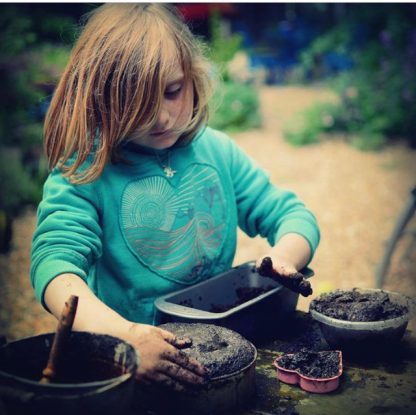
“As a child, there was nothing I loved more than mud pie play. I would spend days covered head to toe in mud, mixing and squishing and decorating.
As a parent, I encourage my children to do the same as often as they can. There is something wonderful about the freedom that mud pie making gives you to create and experiment.
You can’t go wrong with a mud pie; there’s no such thing as adding too much of an ingredient, not setting the oven to the right temperature or hours of hard work ending in a soggy bottom (well OK I can’t make promises on that one).
What follows are my top tips for taking mud pie play to the next level.
It will be messy, it will get everywhere, but it will be a wonderful outdoor activity so embrace the glorious mud and have fun together!
Mud kitchens are great, but they’re also expensive and not everyone has the space to dedicate a permanent corner to one. The key is to create an invitation to play, to make your child feel free to get involved and to use their imagination. Even the most elaborate mud kitchen won’t get a child to play if they don’t feel free to enjoy it in a messy carefree way.
It’s just as easy to create this by bringing a selection of child-safe bowls and cutlery, a toy tea set, or even some plastic pots from the recycling into the garden and encouraging them to get mixing.
Don’t want to use the cutlery outside? No problem – sticks work just as well to mix and you can have fun testing out the difference it makes using small sticks and big sticks.
And the best thing about mud as an ingredient? It’s non-toxic, easy to clean, doesn’t stain plastic and everything can be chucked in the dishwasher and come out sparkling clean and ready for dinner.
Mud isn’t toxic, but some common garden flowers can be so a quick scout around the garden first to check what should be avoided is always sensible.
It’s unlikely that you would consume enough of any mud creation to cause poisoning, though plants such as Foxgloves and Crocuses can cause serious illness if you do.
The important ones to look out for are those that cause skin and eye irritation. Euphorbia has milky white sap which is particularly potent, but even daffodils, tulips and hyacinth can be risky, especially if they’re crushed up and allowed to steep in water.
To be avoided at all costs is Giant Hogweed which, when rubbed on the skin that is exposed to sunlight, will cause serious burns.
More commonly found in hedgerows than gardens, it’s giant size can make it appealing so always keep an eye out.
Berries and fungi can also be risky and it’s best to explain that you should never pick or eat berries without an adult. We always try to keep any edible plants to a clearly marked area of the garden to distinguish them.
Adding ice to mud pie play is an easy way to change things up and great for hot summer days. Flowers frozen into ice cubes look beautiful and add an unusual twist to mud play. They work just as well in flower petal cocktails made in the mud kitchen as they do in the real kitchen, and children love a cocktail shaker! They can also be added them to a big saucepan of “soup” using a ladle to swirl them around, crushed in a pestle and mortar, or simply whacked with sticks and hammers.
In winter you can fill containers with water and foraged leaves and petal to make ice shapes and pictures. To do this simply fill random plastic pots from your recycling with water and leave outside when a hard frost is forecast. In the morning you can break your shapes free and have fun melting, crushing and chipping away at them.
Freezing small toys in the ice gives the added element of needing to ‘save’ the toy.
You don’t always need ice to be perfectly clear for it to have great play value, but if you do want it to be perfect, use water that has been boiled and left to cool. Food dye and non-toxic water-based paints can also be added to the water before it cools or used to paint on the ice afterwards.
Plenty of scientific principles can be demonstrated whilst mud pie making but mixing in a few safe household ingredients can make it even more fun.
Our favourite chemical reaction is sodium bicarbonate and acid. Bicarbonate of soda can be found in baking aisles and you can use any type of vinegar or lemon/lime juice for the acid. The result of mixing the two is an explosion of frothy bubbles as the acid reacts with the sodium bicarbonate to form carbonic acid which then breaks down into carbon dioxide and Water.
The possibilities for fun with this are endless. Do the experiment in a container with a narrow top like a bottle and you’ll have an instant volcano effect, with bubbles pouring out like lava. Red food colouring mixed into the vinegar will give an even more realistic ‘lava’.
Scatter the bicarbonate of soda on a flat surface and you can drip acid on it to write messages or make shapes.
Mix the bicarbonate of soda with cornflour and a little water and you can ‘fossilise’ plastic dinosaurs or bones by leaving the mixture to set in small containers. The dinosaurs can then be excavated by dripping or squirting acid creating a bubbly reveal!
It is worth noting that if you love this reaction as much as we do it can be more cost-effective to buy bicarbonate of soda online in larger quantities than in the supermarket.
I mentioned using cornflour but this common ingredient can also be used to demonstrate the principle of Non-Newtonian Fluids.
A Non-Newtonian Fluid is a liquid that doesn’t follow Newton’s Law of Viscosity, meaning its viscosity changes dependent on stress. Put simply this means that when you first mix the water with the cornflower you will get a liquid, but the more you do to it the harder it gets.
Stir it and the mixture will quickly become thicker and harder to stir, poke it gently and your finger will go straight through, hit it with a hammer and the surface will magically harden instantly!
The great thing is, if you leave it for a minute the mixture will return to its runny liquid state. Children (and adults) can then spend hours trying to figure out this strange concoction.
Add in plastic animals to make a quicksand small world, try putting it in a sieve or strainer, spread it thin or make a big bowl of it and see how it reacts, dip your hand in it and watch as you make a fist and it hardens and relax your hand to watch the liquid relax too.
Both of these create non-toxic products that can easily be washed away with water and won’t damage the garden. In small quantities, they won’t cause harm if they end up in mouths but they will taste really disgusting.
This is a great way to make sure that children don’t end up with anything unsuitable in their mud pie play. It also adds another level to the game, and plenty more opportunities for learning.
Set up a little area with the pots and pans, different sorts of mud (you’ll be surprised at how the shades and textures can vary from different areas of the garden and you can add water and sand to make more variations), flowers and leaves, ice cubes, bottles of water mixed with food colouring, and any other bits you think might appeal like small painted stones.
It doesn’t need to be more than the things laid out on the lawn, then just add some prices and start selling!
By creating a shop rather than having everything available straight away children need to use decision making, planning and maths skills, as well as learning compromise and developing creativity as items ‘sell-out’.
Prices and purchasing methods can be matched to your child’s ages and abilities. For younger children items can be priced from 1-10 stones (or counters, petals, sticks – whatever you have to hand in the garden), whereas older children will enjoy using real coins and increasingly complex amounts, taking turns to be the shopkeeper and find change for their customers.“
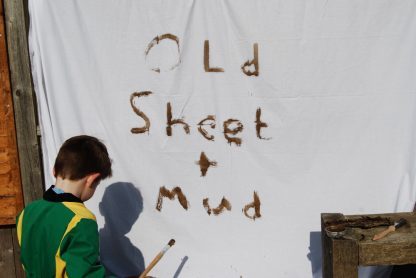
To celebrate International Mud Day in 2020 we asked people to send us their Mud Play Tips - we said “What advice would you give to someone who is new to the world of mud?” The result is our Mud Play Tips page.
If you have a mud play tip that doesn't appear here. we'd love to hear from you.
Your tips could be anything to do with mud kitchens or mud play, but here are some possible areas to consider:
What advice would you give on • how to start? • what to use? • favourite bit of kit • coping with mud & mess • favourite mud activities • best evidence/research • most inspirational book/website/social media • best day ever of playing in the mud • what have you/your group learnt about mud play?
Send your suggestions to share@muddyfaces.co.uk with the subject: Mud Play Tips

Risky play tips & gallery
Inspiration & tips shared by outdoor practitioners and parents enjoying risky play in their settings.
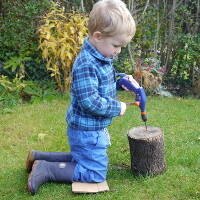
Woodwork tools & tips
Recommended woodwork tools from Early Years woodworking expert Pete Moorhouse.
Read More about Woodwork tools & tips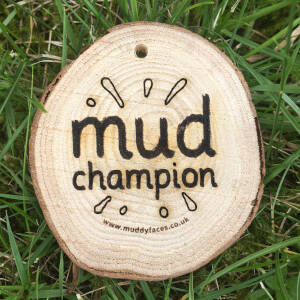
Mud Champions
Meet our Mud Champions!
Click on a profile photo for a mini interview, top tips & resource recommendations, and pay-it-forward Mud Champion nominations.
Read More about Mud Champions